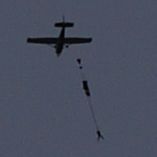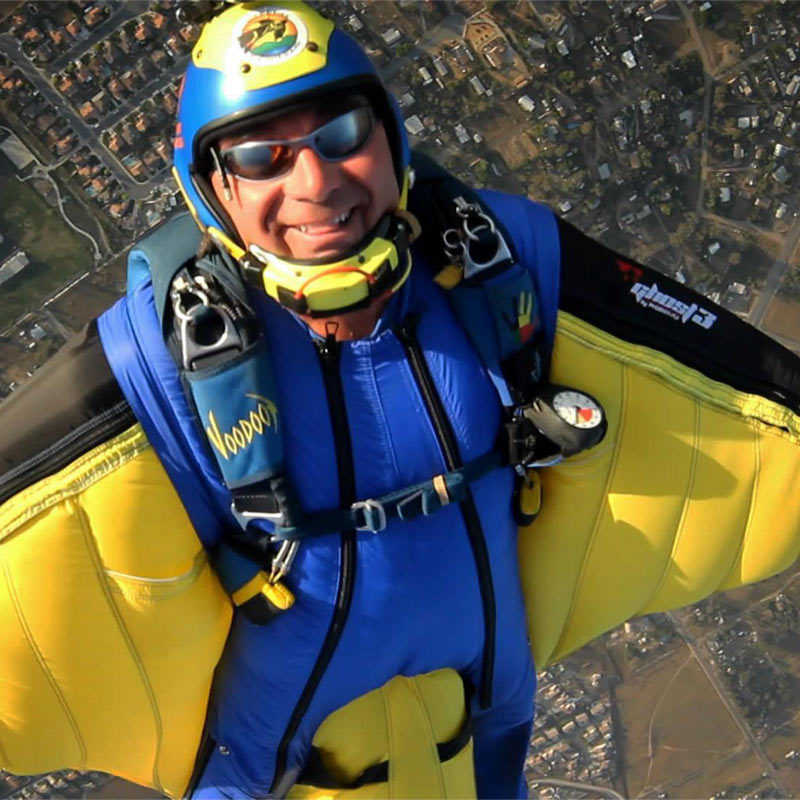Recommended Posts
NickDG 23
I've see more than a few go in flat and stable with nothing out, and also two go in with stand up baglocks.
To my eyes the baglockers were definitely moving faster . . .
NickD ![]() BASE 194
BASE 194
DSE 5
Ether 0
QuoteI may be a newbie and all, but I would have to agree with Spence on that one. Drag or no drag.....a Baglock would more than likely stand you up vertical so you would be indeed freefalling faster than the good ol' belly to earth position. Just my 2 cents.
By that logic, your fall rate under a fully deployed and flying canopy should be faster as well, because it also stands you up.
One must also take into consideration the drag induced by the bag, of course.
NickDG 23
And I just remembered this one . . .
I had an honest to goodness streamer on a square once. It was an old Glidepath Clipper and it came out of the bag alright and pulled me upright, but I felt myself going past upright and start accelerating.
I reached up and shook and pulled on the risers but the slider, which I couldn't see, was still folded into the bottom of the canopy. And absolutely nothing was happening. This wasn't a snivel it was a real streamer. I couldn’t believe it . . .
Anyway, even with the drag of a streamered canopy out, never mind just a small bag, you'll go faster.
I wrote about it for Precision Parachutes when they used to print stories from people who used a Raven reserve to save themselves on their website. It's off the web now, but here's a copy:
NickD ![]() BASE 194
BASE 194
Timebombs . . .
George W. Galloway
Precision Aerodynamics, Inc.
Dunlap, Tennessee USA
Dear George,
Skydiving instructors good at their craft know students must be carefully watched and cleverly handled. They also know students are time bombs. Our morning staff meeting divvies things up and I’m assigned a static line class consisting of two students. I learned my trade jumpmastering static line students and in this accelerated world of student instruction I enjoy teaching and slinging the odd static line class.
Manual is young, capable, and a tad confused. Patrick is quicker of mind but seriously out of shape. Class goes slowly as Manual struggles with the concept of a windsock. There are two types of students. Some are capable of comprehending the whole picture, some just a snapshot. With the latter, priorities are limited to dive flow, how to recognize a good canopy from a bad one, emergency procedures, and how to fly a pattern and land. Everything else is gravy.
I resorted to taking Manual orally through every step over and over like a student pilot goes around and around the pattern until there’s a good chance he’d make it around once without an instructor in the plane. By late afternoon they’re ready. Sitting against the rear bulkhead of the Twin Otter Patrick looks confident and ready. Manual manages a weak smile. He is operating on pure guts.
No matter which instructor rating you hold, you are paid for just one thing. In AFF its make sure a ripcord gets pulled. In tandem it’s make sure the passenger is attached to you. Here, it’s making sure the static line is hooked to something else besides the student. Manual is going first on the theory of less distance from the door, less mistakes. I carefully hooked him up and handed him the static line to pull on and double check. Stroking his shoulder I looked deep into his eyes trying to beam him the confidence he needed. He reached out and grabbed the gripper on my jumpsuit leg, even after I told him not to in class, but I let him hang on.
Most jumpmasters don’t take advantage of it, but say something to someone sitting in the open door of an aircraft for the first time, and they never forget it. Putting my mouth to his helmet I give some last minute exit advice, told him I was very proud of him, and tapped him out. He pushed forward into the relative wind and hit a nice arch looking up and counting like a champ. He had one line twist that cleared before he knew it. Patrick leaped into the door and did another good exit.
I checked my handles going through the door at 4,500-feet and lay on my back watching the Twin Otter climb away. Passing Patrick’s and Manual’s canopies I notice they are both heading the right way. Ten seconds gone and just passing 3500-feet I’m working on my inverted reaper roll until I hit two grand and pitched.
I’m thinking how happy and relieved Manual must be as deployment pulls me upright. What? I go over center and start to accelerate looking up at a perfect streamer. Eighteen hundred jumps (and after 12 years of teaching it) here comes my very first cutaway. My Super Raven opens fast, and on-heading. Never seeing my drama Manual and Patrick are down safe and overjoyed, Manual keeps trying to hug me. I’ll tell you something Mr. Galloway; I could never concentrate on my students that much without a Super Raven reserve on my back.
Thank you,
Nick Di Giovanni
D-8904
AFF S/L I
Senior Rigger # XXXXXXXXX





It doesn't take much force applied to your shoulder (where the risers attach) to pivot your body into the standing position. Think about that - you can do backflips easily enough.
In a PCIT situation, the drag is applied pretty close to your center mass, so it acts as a slowing force while your drag is likely to remain constant.
Share this post
Link to post
Share on other sites